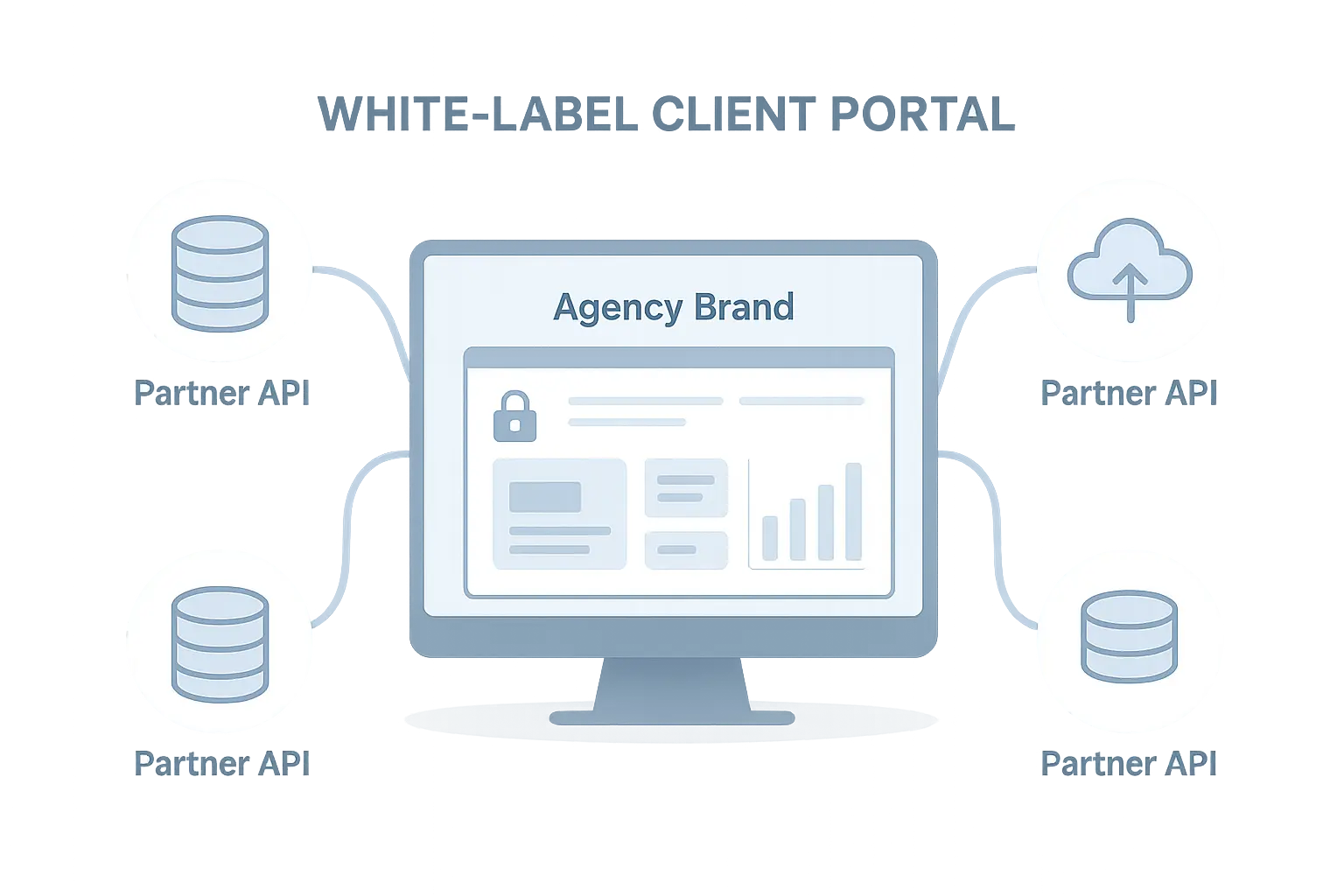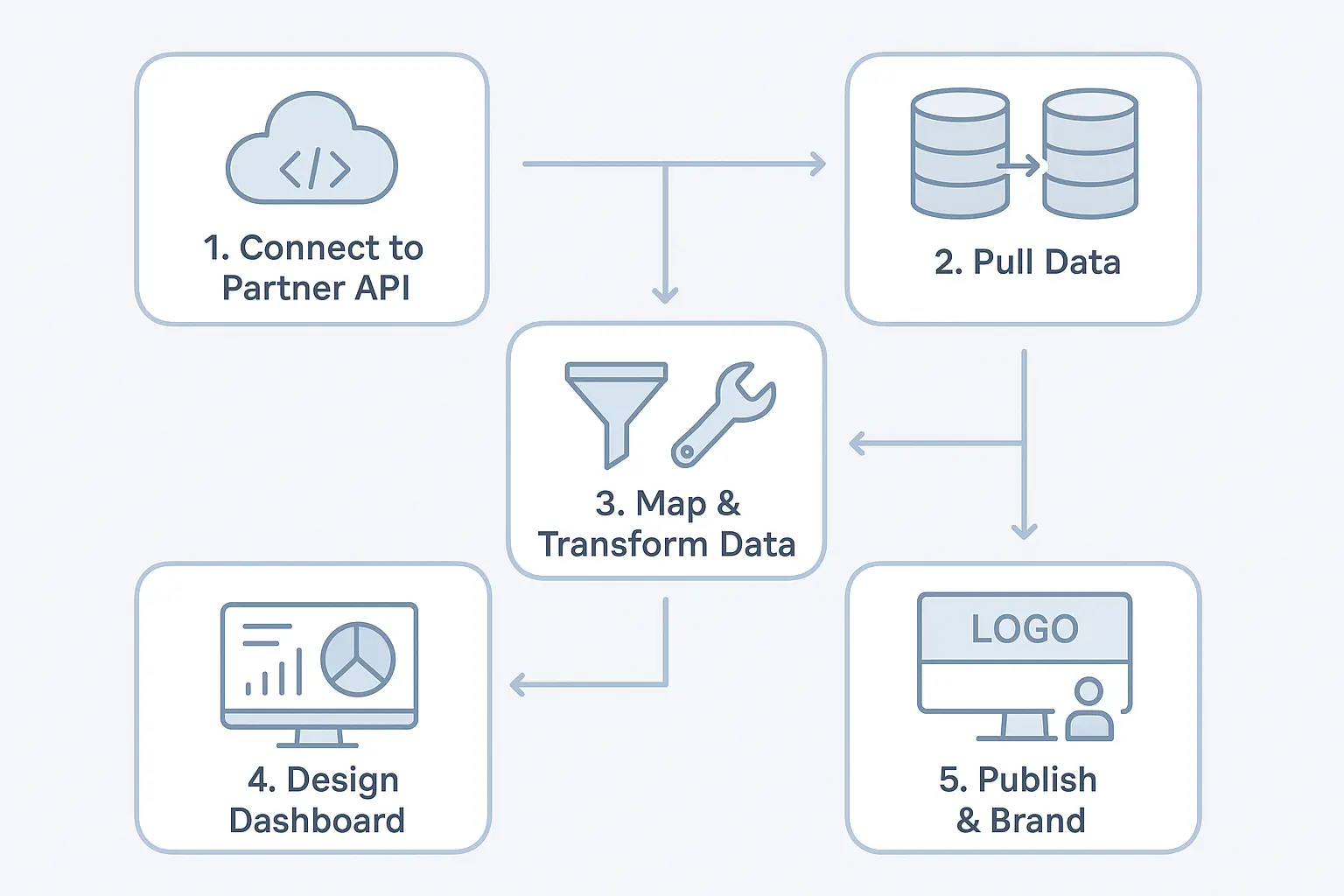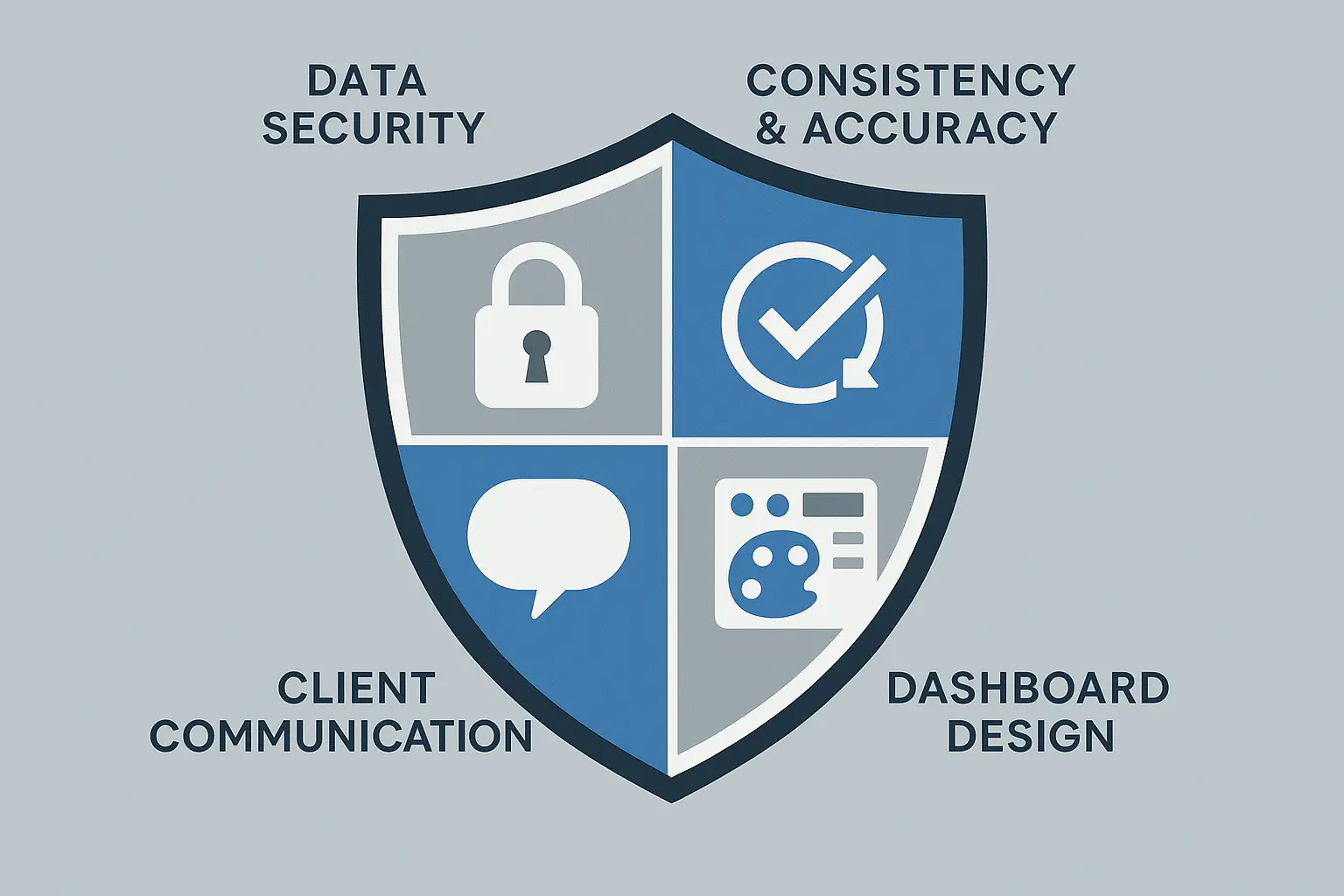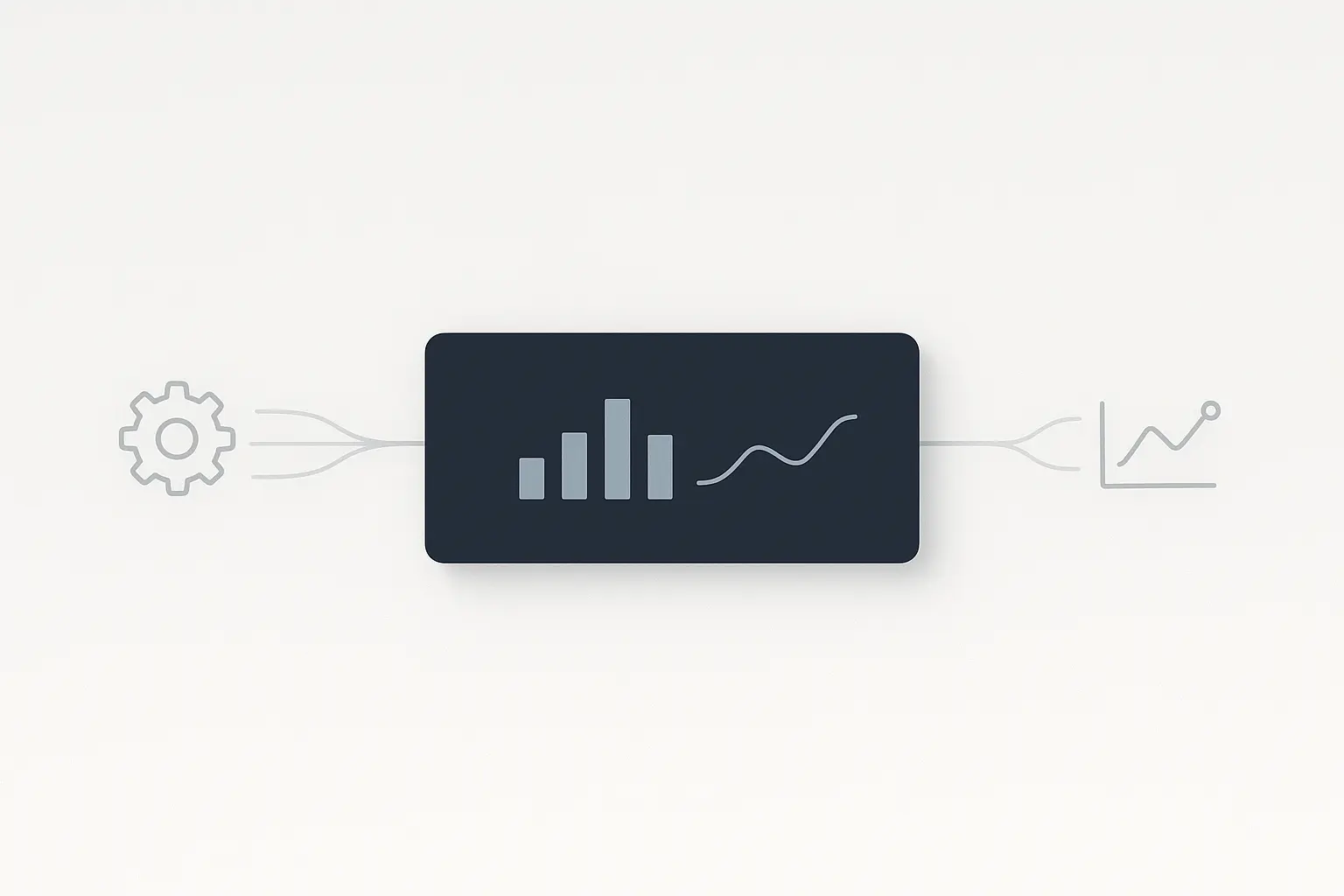You’ve just wrapped up a fantastic quarterly review with your client. The results are solid, the strategy is working, and the relationship is strong. Feeling confident, you send over the detailed performance report.
Then, the email arrives: “This looks great! Just one question… who is [Partner Company Name]?”
Your heart sinks. A tiny logo or a footnote on a report from your fulfillment partner has just introduced a third party into your client relationship, creating confusion and subtly undermining your agency’s authority.
This is more than a cosmetic issue. When 59% of B2B buyers state that brand is a top factor in their purchasing decisions, maintaining brand consistency isn’t just important—it’s essential for growth. Every email, every presentation, and especially every report is a chance to reinforce your value. When a partner’s branding slips through, it chips away at the foundation you’ve worked so hard to build.
The Silent Brand Killer: Why Generic Reporting Dilutes Your Agency’s Value
Using a white-label partner is a smart way to expand your service offerings and scale your operations. It allows you to bring in specialized expertise without the overhead of an in-house team, while you own the strategy, the communication, and the client relationship. But when the proof of your hard work—the data—arrives in a generic spreadsheet or a partner-branded PDF, a critical disconnect happens.
This disconnect can lead to:
-
Client Confusion: It raises questions about who is really doing the work, forcing you into awkward explanations.
-
Perceived Lack of Ownership: It suggests your agency is just a middleman, not the strategic driver of success.
-
A Fractured Customer Experience: A seamless experience is key to retention. Companies with an “above average” customer experience perform 73% better financially than their competitors, and a clunky, unbranded report is a major crack in that experience.
The difference between a generic report and a fully branded, interactive dashboard is stark. One feels like a necessary but uninspired data dump; the other feels like a premium, integrated part of your service.

Maintaining a consistent brand presentation across all platforms can increase revenue by up to 23%—and your client reports are one of your most critical platforms.
The Modern Solution: From Scattered Data to a Single Source of Truth
So, how do you take powerful data from your execution partner and present it seamlessly under your own brand? The answer lies in building a white-label client portal using modern dashboarding tools and a technology called an API.
What’s an API? Think of an Application Programming Interface (API) as a secure messenger. It allows different software applications to talk to each other and exchange data based on a pre-agreed set of rules. Your partner’s platform has the data, and your dashboard tool needs it. The API is the messenger that securely delivers that data on your command, without you ever having to manually export or copy-paste anything.
This isn’t some niche, complex technology. API calls are the backbone of the modern internet and are projected to reach a staggering 20 trillion per year by 2040.
Using a tool like Looker Studio (formerly Google Data Studio), DashThis, or AgencyAnalytics, you can create a central hub. This hub pulls data not only from your white-label partner’s API but also from Google Analytics, your client’s social media accounts, their CRM, and more. Suddenly, you’re not just sending a report; you’re providing a single source of truth for their entire digital marketing performance—all beautifully wrapped in your agency’s branding.

This approach transforms reporting from a reactive task into a proactive, value-added experience.
How to Build Your Branded Dashboard: A 3-Step Overview
While this might sound technical, modern dashboard platforms have made the process surprisingly straightforward. Here’s a high-level look at how it works.
Step 1: Connect Your Data Sources (The API Handshake)
First, you’ll tell your dashboard where to get its information. Your white-label partner should provide you with an “API key”—think of it as a unique, secure password for your client’s data.
In your dashboard tool, you’ll find a connector for a “JSON API” or a specific integration for your partner’s platform. You’ll plug in the API key, and the handshake is complete. Your dashboard now has a live, secure feed of performance data. You can then repeat this process for Google Analytics, social media platforms, and any other relevant data sources.
Step 2: Build Your Story with Widgets and Visuals
With your data flowing in, you can start building the report. Instead of rows on a spreadsheet, you’ll use widgets—like line charts, scorecards, pie charts, and tables—to display the information.
This is where you move from being a data reporter to a storyteller. Don’t just show keyword rankings; show the trend over time. Don’t just list website traffic; show which channels are driving the most engaged users.
The power of this visual approach can’t be overstated. Research from the Wharton School of Business found that using data visualizations can improve comprehension by up to 400%. You’re not just giving clients data; you’re giving them clarity.
Step 3: Brand Everything. And We Mean Everything.
This is the final, crucial step. You’ll customize the dashboard to become an undeniable extension of your agency.
-
Upload your logo.
-
Set the color scheme to match your brand guidelines.
-
Add commentary and insights in text boxes to explain what the data means.
-
Use a custom domain (e.g., reports.youragency.com) so your client is logging into your portal, not a third-party tool.
By the end of this process, you’ll have a living, breathing report that is 100% yours.

The Ripple Effect: Beyond Reporting to True Partnership
A branded, interactive client portal does more than solve the reporting problem. It creates a ripple effect that strengthens your entire client relationship.
Providing a single, easy-to-access dashboard positions your agency as a transparent, data-driven, and tech-savvy partner. It becomes a collaborative space, not just a static document. This level of personalized and relevant experience is exactly what clients expect. According to Accenture, 91% of consumers are more likely to do business with brands that provide relevant and personalized offers.
This superior client experience is the bedrock of retention. Clients who feel confident, informed, and secure in your brand’s ecosystem are far more likely to stay and grow with you. This is how you truly scale your agency. Whether you’re offering social media management, PPC, or specialized white label seo services, presenting the results through a unified, branded portal solidifies your position as the single, invaluable partner managing their growth.
Frequently Asked Questions (FAQ)
Is this complicated or expensive to set up?
Not at all. Most modern dashboard tools are designed to be user-friendly with no-code connectors. Pricing models typically charge per client or per dashboard, making it an affordable and scalable solution for agencies of any size.
Will my client know I’m using a white-label partner?
No. With a fully branded portal, your client has no reason to know. All data, reports, and communications come from you, making your agency the single source of truth and reinforcing your ownership of the results.
What are the best tools for creating a white-label dashboard?
Popular and effective options include Looker Studio (free and powerful), DashThis (known for its ease of use and agency focus), and AgencyAnalytics (an all-in-one agency management platform). The best choice depends on your specific needs and budget.
Can I pull in data from sources other than my white-label partner?
Absolutely. That’s one of the biggest benefits. You can create a holistic dashboard that shows SEO results alongside data from Google Ads, Facebook Insights, LinkedIn, your client’s CRM, and more.
Your Next Step: From Data Silos to Brand Synced
In today’s competitive landscape, delivering great results is only half the battle. How you present those results is what builds brand equity, fosters trust, and ultimately drives retention.
Moving away from generic spreadsheets and partner-branded PDFs is no longer a “nice-to-have.” It’s a strategic imperative. By building a white-label client portal, you take full control of the narrative, ensuring that every data point and every victory reinforces the value and authority of your brand.
Take a moment to review your current reporting process. Is it a seamless extension of your brand, or is it an afterthought? The answer could be the key to unlocking your next level of growth.

